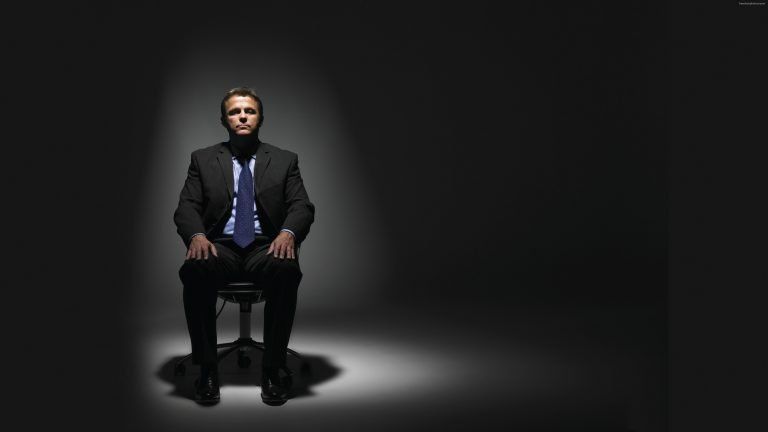The Unseen Filth: Your Building’s Lungs Are Choking
The technician’s screwdriver didn’t just scrape against metal; it dug into a decade of compacted filth. A dense, matted carpet, thick as felt, clung to the inside of the air duct, revealing itself in a sudden, shocking cross-section. It wasn’t merely dust; this was a geological layer of discarded cellular material, fungal spores, pollen, pet dander carried in on countless articles of clothing, fibers from forgotten carpets, and the microscopic remnants of every office snack ever consumed by some 204 individuals who breathed its recycled air. A faint, almost imperceptible mustiness, the scent of forgotten dampness and slow decay, wafted out, an olfactory ghost of what lay hidden.
Geological Dust
Invisible Cocktail
Slow Decay
The Delusion of Cleanliness
This isn’t just about a single grimy vent; this is about the profound, almost willful blindness we cultivate. We obsess over the visible-the polished gleam of a desk, the sanitization of a doorknob, the spotless clarity of a screen. We engage in a kind of cleanliness theater, meticulously tending to the surfaces we can immediately see and proudly present. Yet, beneath the ceiling tiles, behind the seamless walls, lies the true respiratory system of our buildings, an intricate network of ducts that silently processes and recirculates the very air we draw into our bodies, hour after hour.
The delusion is simple, yet devastating: if it’s out of sight, it’s out of mind, and therefore, it can’t be harming us. My own throat, I confess, often feels scratchy by 2:04 PM, a chronic irritation I’ve long dismissed as “just allergies.” But what if it’s not the outside world, but the very air within my controlled environment, delivering a continuous, low-grade assault from a duct last cleaned in 2004, or perhaps, never at all?
When Buildings Suffer Respiratory Distress
Our buildings, like us, breathe. And like us, they can suffer from chronic respiratory distress. When their ‘lungs’-the labyrinthine HVAC systems-are clogged, they recirculate not just air, but an invisible sticktail of irritants, allergens, and microbial life. Imagine breathing through a dirty cloth all day, every day. That’s what many of us are unknowingly doing. This silent assault isn’t always dramatic; it rarely manifests as a sudden collapse. Instead, it’s a slow erosion of well-being: persistent fatigue, inexplicable headaches, a subtle but significant dulling of cognitive function.
It’s the kind of background noise that becomes so constant, you stop hearing it, stop noticing how much clearer the world sounds when it’s gone. It’s the invisible weight, the drag on productivity that can cost businesses millions in lost focus and increased absenteeism-a figure that rarely appears on a balance sheet but is undeniably real in the daily grind.
Cognitive Dulling
Persistent Fatigue
Headaches
Rachel’s Blind Spot
Rachel K., a brilliant traffic pattern analyst I know, used to embody this precise oversight. Her mind was a finely tuned instrument, dissecting the invisible flow of data, identifying bottlenecks in complex logistics networks, and predicting future congestion with uncanny accuracy. She’d reduce transit times by as much as 14%, optimizing digital pathways for major firms. Rachel was meticulous in her work, yet she attributed her persistent brain fog and daily sneezing fits to long hours, screen fatigue, or seasonal changes.
She tried every visible solution: different coffees, a new ergonomic chair, even a light therapy lamp. Her office on the 4th floor was known for a peculiar draft, which she merely accepted as a characteristic of the building built in 1984. She optimized external systems, never considering the internal one that brought air directly to her.
Time Optimized
Critical Route
Her turning point arrived, not through a sophisticated data model, but a mundane conversation. A colleague, frustrated by a mysterious recurring odor, finally called for an inspection of their shared ductwork. When the panel was opened near Rachel’s workstation, the sight of the thick, dark accumulation was like a physical blow. Her abstract understanding of hidden flows instantly coalesced into a concrete, personal horror. The draft wasn’t just cold air; it was a constant, low-grade bombardment of everything that had collected since the last, if ever, service in 2014. The irony was palpable: she could meticulously map the most efficient routes for packages across continents but had overlooked the most critical route of all-the air to her own lungs.
It was a profound moment of connection, a sudden, unpleasant jolt, much like stepping in something wet wearing socks – a quick, cold reminder that what you don’t anticipate can still shock you, even if you thought you were careful.
My Own Moment of Reflection
I’m no stranger to this blind spot myself. I often find myself criticizing the “cleanliness theater” of others, the preoccupation with visible surfaces while ignoring systemic issues. I felt I was above it, seeing the deeper problems. And then I remembered my own furnace filter at home. I’d promised myself I’d change it every three months. It had been, well, five? Maybe six? The visible dust bunnies under the couch were a constant, nagging reminder, yet the hidden filter, doing the silent, thankless work, was easy to forget.
It’s the mental trap of prioritizing the immediate, the tangible, over the unseen, long-term maintenance. I had planned to check it by the 24th, but then life, as it often does, intervened.
The Cost of Neglect
What happens when these accumulations cross a critical threshold? It’s not just increased allergies or brain fog. It’s the potential for mold and mildew, spreading spores throughout the environment, triggering more severe respiratory issues. It’s the reduced efficiency of the HVAC system itself, forcing it to work harder, consume more energy, and ultimately shortening its lifespan. We are, in essence, demanding more from our infrastructure while giving it less attention.
The cost of reactive crisis management-repairing a broken system, dealing with widespread health complaints-is almost always astronomically higher than proactive prevention. It feels like a lesson humanity is condemned to relearn every 44 years or so, each time at greater expense.
A Plea for Perspective, Not Panic
This isn’t a call for panic; it’s a plea for perspective. Understanding the unseen doesn’t mean succumbing to fear; it means embracing empowerment. It means recognizing that proactive maintenance of these critical, unseen infrastructures isn’t an arbitrary expense, but a fundamental investment in human capital, operational longevity, and long-term environmental health.
It’s about creating an environment where every breath is truly clean, not just marginally tolerable. It’s about acknowledging that a building that breathes freely helps its occupants think more clearly, work more effectively, and live more healthily. This isn’t merely about removing dirt; it’s about restoring peak efficiency, enhancing occupant well-being, extending equipment life, and potentially reducing energy costs by as much as 24%. The actual dollar amount saved in reduced absenteeism, improved focus, and lower utility bills often outweighs the initial investment by a factor of 4, demonstrating a genuine return on investment.
Energy Reduction
Investment Factor
It’s why services focused on the health of a building’s very breath are so vital. If you’re looking for partners who understand this silent battle, who possess the expertise to dig deep into the hidden pathways and restore the lifeblood of your building, you might consider reaching out to M&T Air Conditioning. They offer more than just a cleaning; they offer a healthier, more efficient future for your space.
The True Meaning of Clean
Ultimately, the question isn’t just about the cleanliness of what we can see, but about the purity of the very air we draw into our bodies, hour after hour, day after day, in the spaces we inhabit for a significant portion of our lives. What does it mean to truly “clean” a space? It means acknowledging the full, honest breath of a building, and taking responsibility for the air we share.





